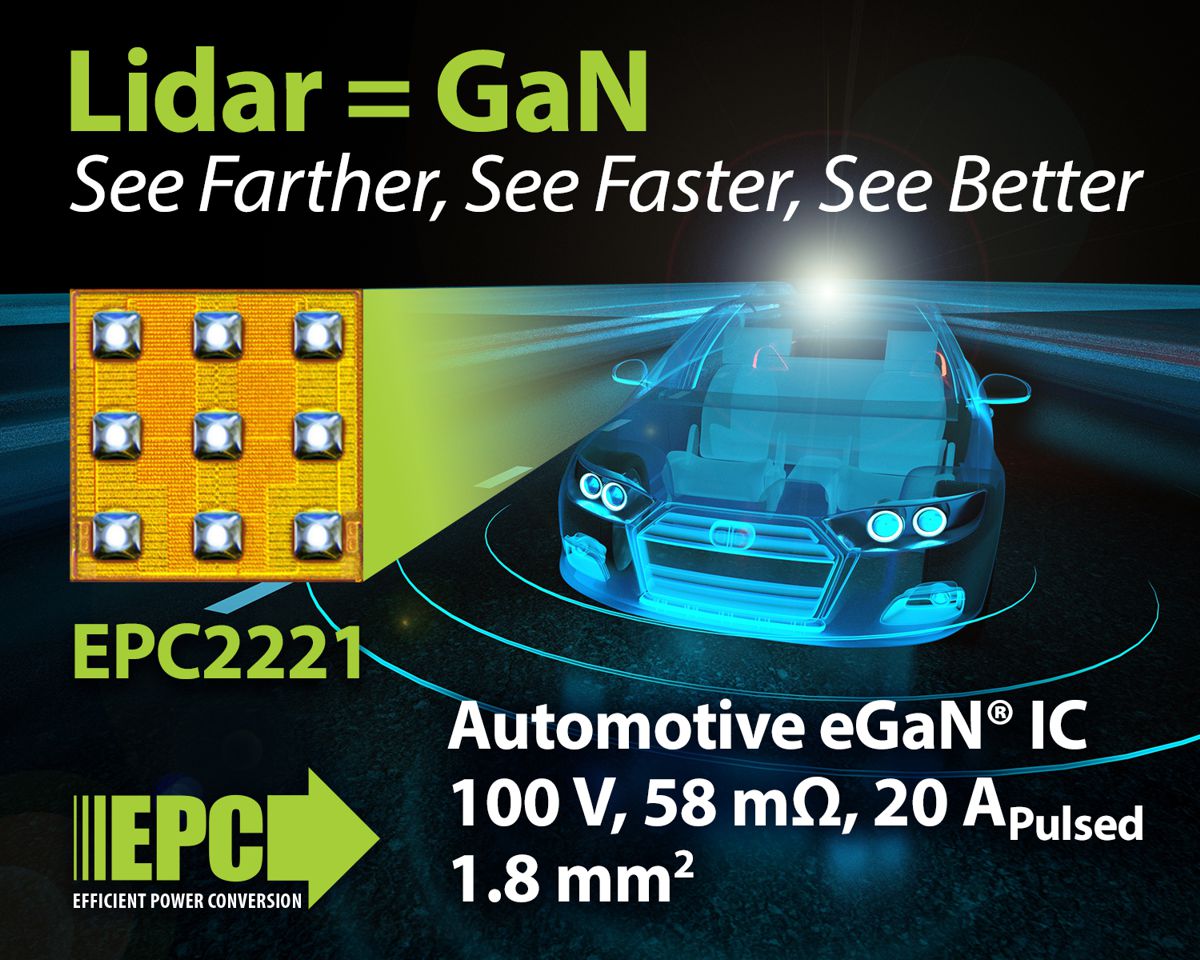EPC announces new AEC Qualified Lidar Integrated Circuit
Efficient Power Conversion (EPC) introduces the latest addition to its family of automotive qualified transistors and integrated circuits offering higher performance and smaller solution size for time-of-flight (ToF) lidar applications including robotics, drones, 3D sensing, and autonomous cars.
EPC announces the introduction of the EPC2221, a common source dual gallium nitride FET rated at 100 V, 58 mΩ, and 20 A pulsed current. The EPC2221 can be used in lidar systems for robots, surveillance systems, drones, autonomous cars, and vacuum cleaners.
The low inductance and capacitance of the EPC2221 allows fast switching (100 MHz) and narrow pulse widths (2 ns) for high resolution and high efficiency. Additionally, the ultra-small size of 1.35 mm x 1.35 mm reduces PCB cost and total solution size.
The EPC2221 is the latest addition to a growing family of GaN transistors and integrated circuits designed to meet the performance and reliability standards of demanding automotive applications. The EPC2221 has completed rigorous automotive AEC Q101 qualification testing including humidity testing with bias (H3TRB), high temperature reverse bias (HTRB), high temperature gate bias (HTGB), and temperature cycling (TC), as well as several other tests.
In addition to lidar in demanding automotive applications, the EPC2221 is perfectly suited for high-frequency DC-DC conversion, wireless power applications, and synchronous rectification.
“This new AEC certified product is the latest addition to a growing family of EPC gallium nitride-based transistors and integrated circuits designed to enable autonomous driving and improve safety,” said Alex Lidow, CEO, and co-founder of EPC. “This new integrated circuit improves the performance while reducing size and cost for time-of-flight lidar systems.”
The EPC2221 is priced at $1.26 for a 2.5Ku reel and available for immediate delivery from Digi-Key Electronics.
Designers interested in replacing their silicon MOSFETs with a GaN solution can use the EPC GaN Power Bench’s cross reference tool to find a suggested replacement based on their unique operating conditions.




















